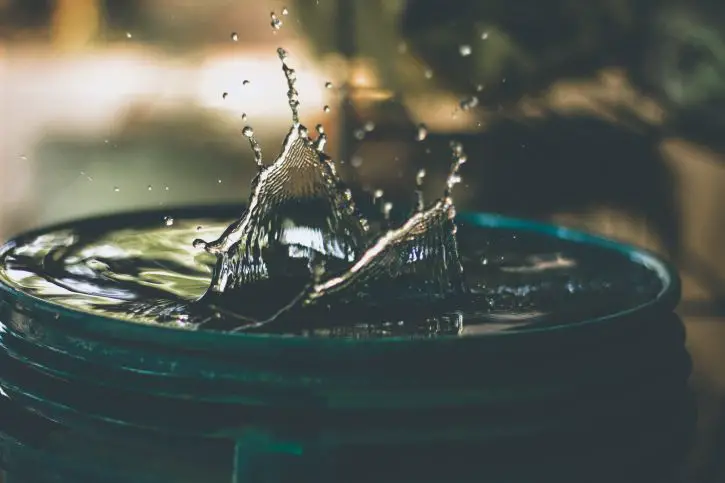Camp Lejeune is a United States Marine Corps base situated in North Carolina. It has become the epicenter of one of the most significant water contamination incidents in American history.
For decades, military personnel, their families, and civilian employees stationed at the base were unknowingly exposed to toxic chemicals through contaminated drinking water. The contaminants found in Camp Lejeune’s water supply have had severe and lasting health effects on those exposed.
Recent Developments in Camp Lejeune Case Settlements
The government has introduced a compensation program. This program is designed to expedite the resolution of claims related to the harm caused by contaminated water. This program offers eligible individuals, including Camp Lejeune veterans, the opportunity to receive compensation of up to $450,000.
The aim is to streamline the handling of the potentially hundreds of thousands of claims, as noted by TorHoerman Law. More than 93,000 claims have already been submitted, and some affected veterans have expressed frustration with the slow claims process.
Under this initiative, the Camp Lejeune settlement amounts will be determined. This determination will be based on the specific illnesses of claimants and the length of their stay at the base.
In this article, we will delve into the five most perilous chemicals found in the Camp Lejeune water contamination. We will also shed light on the gravity of the issue and its implications for those seeking compensation under this newly introduced initiative.
Tetrachloroethylene (PCE)
PCE stands out as the primary culprit behind the water contamination crisis at Camp Lejeune, leading to numerous injuries and fatalities. PCE, a transparent liquid chemical used in the dry cleaning process for fabrics, poses health risks through oral, inhalation, and dermal exposure. It travels through the bloodstream and tends to target vital organs such as the central nervous system, liver, and kidneys, accumulating within fat cells.
The contamination endured at the Tarawa Terrace water treatment and supply facility at Camp Lejeune persisted for a staggering 346 months. The contamination’s source was eventually traced back to a nearby dry cleaning establishment.
It’s noteworthy that the Environmental Protection Agency sets a maximum safe level for PCE in drinking water at just five micrograms per liter (ug/L). In 1985, the Camp Lejeune water supply recorded a peak TCE contamination level at a significantly higher 215 ug/L.
Trichloroethylene (TCE)
Trichloroethylene, often abbreviated as TCE, is an industrial chemical employed in the production of refrigerants and other hydrofluorocarbons. Recognized for its hazardous nature, TCE has a long-established history of being unsuitable for human consumption. It has been used both as a solvent and as a fumigant for insect control.
The human body primarily absorbs trichloroethylene through inhalation, oral consumption, and dermal contact. Once absorbed, it travels through the bloodstream to major organs, where it tends to accumulate within fat cells. The liver, kidneys, and lungs play a crucial role in metabolizing TCE within the body, particularly when it’s inhaled.
Studies suggest that metabolites of TCE may contribute to the adverse health effects associated with its exposure.
In military settings, TCE also served as a common solvent and degreaser for cleaning metal equipment. Notably, the Hadnot Point water treatment facility, which supplied water to Camp Lejeune, was discovered to be heavily contaminated with TCE. This contamination was believed to have stemmed from various sources.
It’s essential to note that the EPA has established a maximum safe level for TCE in drinking water. This limit is set at just five parts per billion (ppb). In contrast, the Camp Lejeune water supply exhibited TCE contamination levels as high as a staggering 1,400 ppb.
Benzene
Benzene, a highly volatile and easily ignitable chemical, found predominant use at Camp Lejeune as both a cleaning agent and a fuel additive. In 1985, during the evaluation of the Tarawa Terrace drinking water system, benzene was detected at less than 2 ppb.
Benzene carries the potential to instigate both short-term and long-term health complications. It has earned a carcinogenic classification by the International Agency for Research on Cancer. Studies also indicate that individuals consistently exposed to benzene exhibit higher-than-average incidences of leukemia.
Prolonged exposure to benzene can also have adverse effects on reproductive organs. Findings have shown that women inhaling benzene experienced irregular menstrual cycles and reduced ovary size. It’s noteworthy that there’s no substantiated evidence of infertility in men. In pregnant animals, exposure to benzene has led to outcomes such as reduced birth weight, delayed bone development, and damage to bone marrow.
Vinyl Chloride
Vinyl chloride, an odorless gas, plays a pivotal role in the production of polyvinyl chloride (PVC) plastics. This chemical was integrated into various industrial processes at the base, including the fabrication of PVC water pipes. Exposure to vinyl chloride is associated with an increased risk of cancer. This connection is supported by both human and animal studies, which have shown higher incidences of liver, lung, and various other cancer types.
For individuals exposed to airborne concentrations of 1,000,000 parts per billion (ppb) or more, the risk of miscarriage and birth defects is heightened. Additionally, there is documented evidence of damage to the male reproductive organs in laboratory animals resulting from vinyl chloride exposure.
Lead
Lead contamination posed yet another substantial concern within the Camp Lejeune water supply. Certain samples from the base revealed alarming lead levels, registering as high as 484 parts per billion. Lead exposure is especially perilous for young children, manifesting in developmental delays, learning challenges, and behavioral issues.
Among adults, the consequences encompass elevated blood pressure, potential kidney impairment, and reproductive complications. The primary source of this lead contamination in the water supply was largely attributed to the use of lead-based solder. This solder was employed in the construction of water distribution lines.
Conclusion
The contamination of Camp Lejeune’s drinking water with these five dangerous chemicals is a tragic chapter in American environmental and military history. The effects of this contamination persist and continue to affect those who were exposed.
It serves as a stark reminder of the significance of vigilance in safeguarding our water supplies. It also underscores the importance of protecting the health and well-being of those who serve in our armed forces.
Efforts to address the legacy of Camp Lejeune’s water contamination involve providing medical care and compensation for those affected. Additionally, ongoing environmental remediation is being conducted to prevent similar incidents in the future.






![YouTube SEO in 2024 [Definitive Guide]](https://getpixie.com/wp-content/uploads/2024/02/shutterstock_1684828252-1-150x150.jpg)








